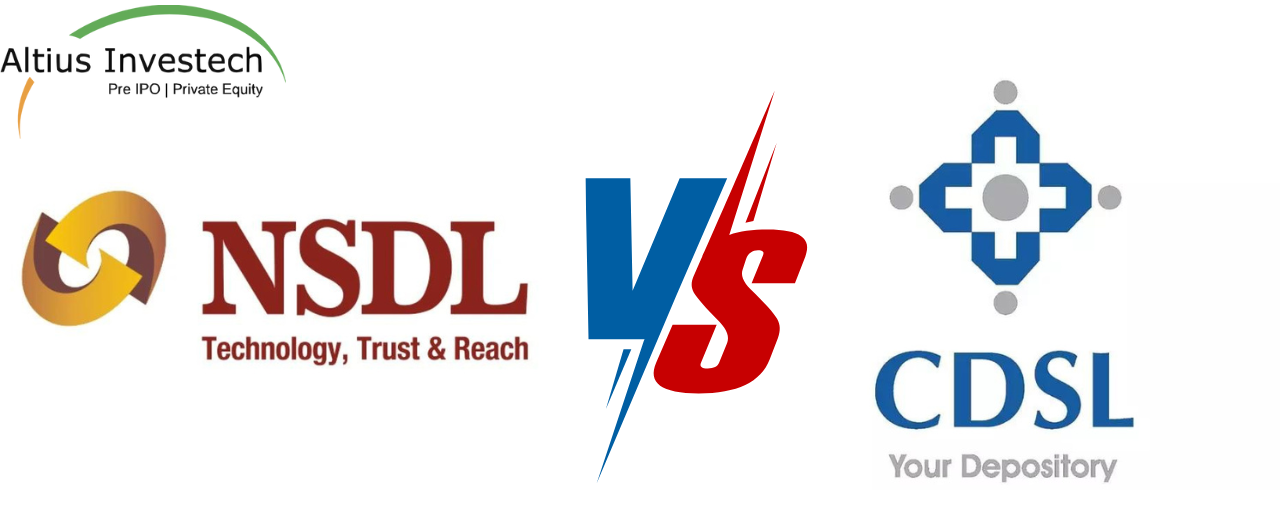What are the Differences Between NSDL and CDSL ? – Let’s Find Out
NSDL and CDSL are both government-registered share depositories in India, entrusted with holding shares in electronic form. In the past, when share trading was primarily conducted offline, shares were held as physical paper certificates.
To put it simply, NSDL and CDSL function similarly to how banks handle cash and fixed deposits. While banks assist in storing cash electronically rather than as physical currency kept in safes, share depositories like CDSL and NSDL facilitate the storage of shares in a dematerialized form, eliminating the need for physical share certificates.
How Do Depositories Work?
- Demat Account Functionality: Demat accounts are essential for trading stocks, where shares are credited when bought and debited when sold.
- Depositories (e.g., CDSL, NSDL): These entities hold shares on behalf of investors. When you open a demat account, the depositories hold your shares securely.
- Share Transfer: Transactions involve transferring shares between demat accounts, with depositories ensuring the accuracy and security of these transfers.
- Dividend Distribution: Depositories play a role in distributing dividends to shareholders by providing necessary shareholder information to companies.
- Streamlining Transactions: Overall, depositories streamline the process of share trading, ensuring efficiency and security in transactions.
What is NSDL?
NSDL, established in 1996, is India’s oldest and largest depository, headquartered in Mumbai. It introduced electronic trading services, pioneering a shift from paper-based transactions. With 3.15 crore active investors and over 36,123 service centers across 2,000 cities, NSDL ensures wide accessibility. It safeguards various financial securities electronically, including stocks, bonds, and mutual funds. NSDL offers services like dematerialization, rematerialization, transfers between depositories, off-market transfers, lending of securities, and collateral/mortgage services. These services streamline securities transactions and enhance investment flexibility, contributing significantly to India’s capital market growth.
What is CDSL?
CDSL, established in Mumbai in 1999, is India’s second-largest depository after NSDL. Similar to NSDL, CDSL offers a comprehensive range of services, including holding financial securities in electronic format and facilitating trade and settlement of orders. It serves as a central depository for various forms of stocks and securities, just like NSDL. According to SEBI data, CDSL boasts over 5.2 crore active customer accounts and operates through approximately 21,434 depository participant service centers.
Difference between NSDL and CDSL
There is no significant distinction between holding a Demat account with a DP registered with NSDL vs CDSL in terms of services provided to investors. Both offer comparable trading and investment services and are regulated by SEBI. Their respective operation markets are the only distinction between the two depositories. The Bombay Stock Exchange (BSE) serves as CDSL’s major market, whilst the National Stock Exchange (NSE) serves as NSDL’s primary functioning market.
Operational Metrics of NSDL & CDSL
| Metric | NSDL | CDSL |
|---|---|---|
| Market Share | Greater market share in terms of the number of DEMAT accounts | Lower market share in terms of the number of DEMAT accounts |
| Companies with Securities in Demat Form | 40,987 | 20,323 |
| Demat Custody Value (FY23) | ₹302.19 lakh crore | ₹39.71 lakh crore |
| FPI-held Securities Serviced (Mar 31, 2023) | 99.99% | – |
| Operating Markets | The principal functioning market is the Bombay Stock Exchange (BSE) | Principal functioning market is the Bombay Stock Exchange (BSE) |
Financial Performance Comparison: NSDL vs. CDSL
₹ in crores (FY 2022-23)
| Particulars | NSDL | CDSL |
|---|---|---|
| Total Income | 1100 | 621 |
| Total Expenditure | 758 | 232 |
| EBITDA | 342 | 389 |
| PAT | 235 | 276 |
| EBITDA Margins | 31% | 63% |
| Net Profit Margin | 21% | 44% |
| EPS | 11.74 | 26.41 |
| DPS | 1 | 16 |
| Dividend Payout Ratio | 9% | 61% |
| Net worth | 1429 | 1213 |
| ROE | 17% | 23% |
| Shares outstanding | 20.00 | 10.45 |
| CMP (15th April,2024) | 800 | 1976 |
| Market Cap | 16000 | 20649 |
| P/E | 68 | 75 |
| P/S | 15 | 33 |
NSDL IPO Details
- DRHP Filing Date: July 7, 2023
- Open Date: November 6, 2023
- Close Date: November 9, 2023
- Size: Expected around ₹3,000 crore.
- Valuation: Over ₹15,000 crore.
- Offering: Total OFS of up to 57,260,001 shares.
- Major Stakeholders: National Stock Exchange of India Ltd, IDBI Bank, State Bank of India, HDFC Bank, Union Bank of India, Administrator of the Specified Undertaking of the Unit Trust of India.
- Employee Reservation: Possible discount for eligible employees.
- Listing: Proposed on the BSE.
ALSO READ OUR OTHER BLOGS
GET IN TOUCH WITH US:
For any Query/ Personal Assistance, Feel Free to Reach Out at support@Altiusinvestech.com or Call us at +91-8240614850.
For Direct Trading, Visit – https://trade.altiusinvestech.com/

